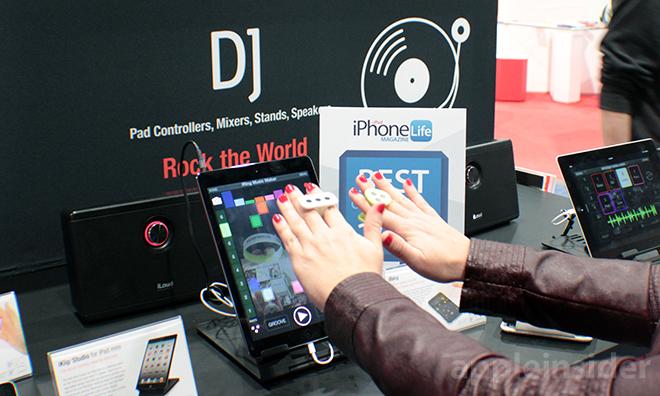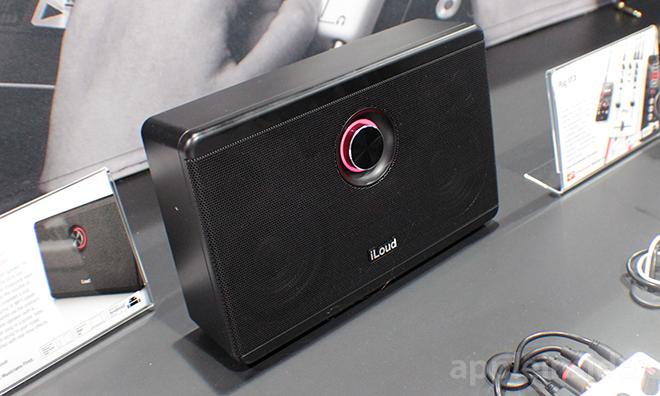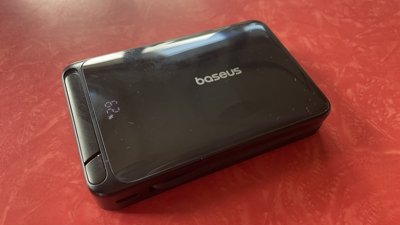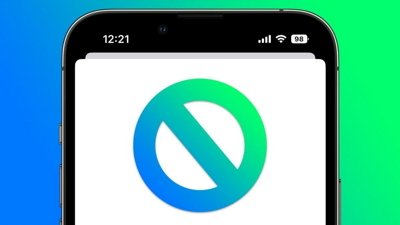IK Multimedia, the company behind numerous music creation apps and the iRig series of MIDI, mic and mixer hardware for iOS, unveiled the iRing at CES; an inexpensive wearable motion control solution with tons of potential.
IK claims iRing is the future of motion control for iOS apps, music and more. The system consists of two "rings" that fit between a user's fingers, each with a different pattern of dots that can be picked up by an iPhone or iPad's front-facing camera.
Special software monitors the location of each iRing, as well as the size of the dots, meaning motion can be tracked simultaneously in three dimensions. Applying the data to certain apps allows users to manipulate sound with air gestures.
iRing was demoed using an app called "iRing Music Maker," which lets users set grooves, synthesizers, loops, filters and more with just two rings.
In the setup we tested, the triangular-patterned ring attached one hand and controlled grooves and tones by "pushing and pulling" along the z-axis, toward and away from the iPad's camera. The second ring with linear dots was worn on our other hand and triggered loops and different notes in the same way. All control was accomplished without ever touching the device.
Also, hiding a ring from the iOS device's camera can trigger even more app-specific functions, adding yet another dimension to the system's user interface.
As for compatibility, the iRing was designed to be worn while holding traditional musical instruments or manipulating MIDI controllers, meaning the system can be used in tandem with other tools.
The iRing will be available later this quarter for $25 per set of two rings.
In addition to the iRing, IK had a number of other music-minded products on display, including its latest iLoud amplifier.
With 40W of total power driving iLoud's speakers and built-in iRig circuitry, users can hook up a guitar or mic through the provided 1/4-inch jack, connect an iOS device via a 3.5mm jack or Bluetooth and record live. Alternatively, the iLoud can simply be used to jam with IK's iOS post-processing apps like AmpliTube or VocaLive.
The iLoud is on sale now for a list price of $299, though Amazon resellers have stock starting at $289.
 Victor Marks
Victor Marks









-m.jpg)






 Christine McKee
Christine McKee
 Wesley Hilliard
Wesley Hilliard
 Thomas Sibilly
Thomas Sibilly
 Marko Zivkovic
Marko Zivkovic
 Andrew O'Hara
Andrew O'Hara
 Amber Neely
Amber Neely
 William Gallagher
William Gallagher









9 Comments
The title said hands on, I was really hoping to see if the iRing worked well… How intuitive it was and how well it actually worked. I guess you didn't find that as important as listing the marketing material info.
Back in April 2013, Brian White cracked me up when he announced his channel checks led him to believe Apple was developing an Ring television controller! I ridiculed the analyst multiple times throughout the year about the announcement. To see the product produced by another company is absolutely amazing!! Here is the link to Brian's announcement... http://appleinsider.com/articles/13/04/03/rumor-apple-television-with-iring-motion-controller-to-launch-this-year. Now I am pondering how to proceed with Brian's upcoming Asian channel check announcements. Hmmm...
The title said hands on, I was really hoping to see if the iRing worked well… How intuitive it was and how well it actually worked. I guess you didn't find that as important as listing the marketing material info.
Hi Dave,
This wasn't quoting material. This was me using it. I photographed someone else's hands wearing the rings, because juggling camera and focal length are hard. I understand you wanted video, but it works really well. Two observations you'll want to hear are, you need to stay within the camera's viewing area - if you're too close it's easy to move your arms high and not affect the app. On the show floor it's easy to be too close.
The second observation is that the apps / recognition seem to take into account that human movement can be inaccurate especially when you're holding your arms out in front of you like a gorilla - so it felt as if there was a threshold between my movements and it responding. This was actually good for the music loops application, but this and the fact that I was way too close to the iPad made moving the Pong paddles hard.
Also: one person playing both paddles in Pong can be hard - left arm, right arm, it would take more practice than I was able to dedicate time for on the show floor.
For 25 bucks, I don't think there's a risk here - the music app was fun, and they're giving the SDK away to other developers for free. If other developers take advantage of it (and I think they should) there will be a range of cool experience you could have. Imagine touch gestures like the Angry Birds slingshot being replaced by physically pulling back the iRing? I know we've seen this sort of physical interaction in Wii and XBox/Kinect, but there's something about that experience that I think can be quite cool.
I am not sure what the futur is for wearables that require any kind of movements beyond the way we naturally react to every day life. I just can't imagine people standing around or I motion, moving their hands like a magician, or moving your bread around saying "ok glasses", or moving your rest to your face answering calls or doing something else. I am probably wrong, but any wearable has to integrate with our natural movements and not make us look weird. The iPhone didn't require any change in our physical habits except when you use Siri.
The wearable biz is going to be the laughing stock of the consumer sphere. I can't wait to read the list of bs products that entered this idiotic arena and bombed! Although Apple will most likely kill them all and sell billions in this markets. iRing? GTFO! LOL!